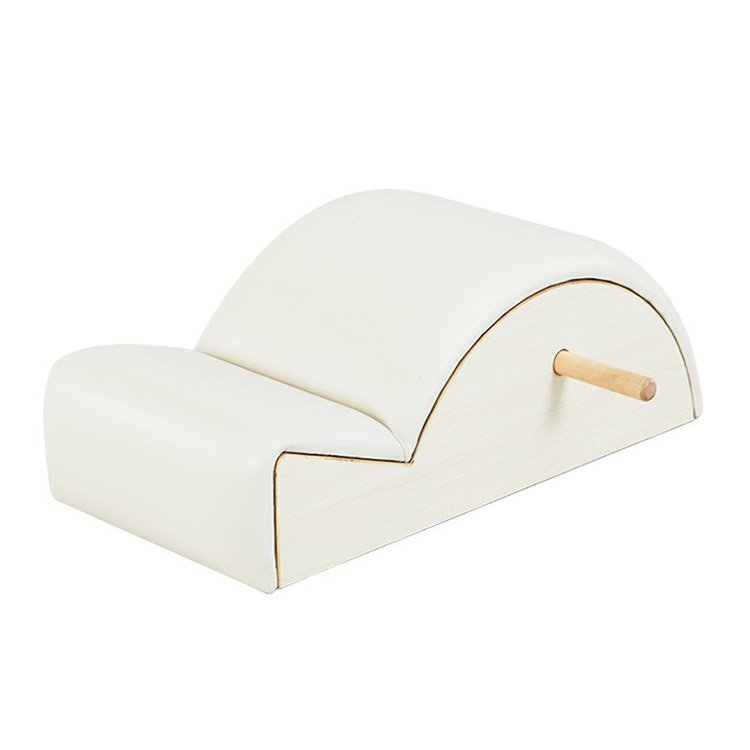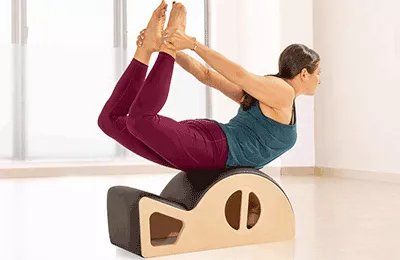
Introduction to Spine Health and Pilates
The human spine is a complex structure consisting of vertebrae, discs, ligaments, and muscles that work together to support the body, protect the spinal cord, and enable movement. Maintaining a healthy spine is crucial for overall well-being, as it affects posture, mobility, and even mental health. Poor spinal alignment can lead to chronic pain, reduced flexibility, and a host of other issues. Pilates, a form of exercise developed by Joseph Pilates in the early 20th century, focuses on core strength, flexibility, and proper alignment, making it an excellent choice for those looking to improve their spinal health.
Pilates exercises are designed to engage the deep muscles of the core, which are essential for stabilizing the spine and maintaining good posture. By strengthening these muscles, Pilates can help alleviate back pain, improve balance, and enhance overall physical performance. Additionally, Pilates emphasizes mindful movement and breath control, which can reduce stress and promote relaxation, further benefiting spinal health.
Realigning Your Spine: Is It Possible?
Realigning the spine is a common goal for many individuals seeking to improve their posture and reduce back pain. While significant structural changes to the spine may require medical intervention, such as surgery or chiropractic adjustments, there are several non-invasive methods that can help improve spinal alignment over time.
Posture Awareness
One of the simplest ways to realign your spine is to become more aware of your posture. Pay attention to how you sit, stand, and move throughout the day. Make a conscious effort to keep your shoulders back, your head up, and your core engaged. This can help prevent slouching and reduce the strain on your spine.
Stretching and Flexibility Exercises
Regular stretching can help release tension in the muscles surrounding the spine, allowing it to return to a more natural alignment. Focus on stretches that target the neck, shoulders, back, and hips. Yoga and Pilates are excellent options for improving flexibility and spinal alignment.
Strengthening Exercises
Strengthening the muscles that support the spine can also help improve alignment. Core-strengthening exercises, such as planks, bridges, and pelvic tilts, are particularly effective. These exercises help stabilize the spine and reduce the risk of injury.
Pilates
Pilates is a comprehensive system of exercises that focus on core strength, flexibility, and proper alignment. Many Pilates exercises are specifically designed to realign the spine and improve posture. For example, the “Pelvic Curl” and “Spine Stretch Forward” are excellent for promoting spinal health.
Imprinting Your Spine in Pilates
In Pilates, “imprinting” refers to the process of gently pressing the lower back into the mat or floor, creating a flat surface between the spine and the ground. This technique is often used at the beginning of a Pilates session to establish a neutral spine and engage the core muscles.
Steps to Imprint Your Spine:
Lie on Your Back
Start by lying on your back with your knees bent and feet flat on the floor, hip-width apart.
Relax Your Body
Take a few deep breaths to relax your body and release any tension in your muscles.
Tilt Your Pelvis
Gently tilt your pelvis backward, causing your lower back to press into the mat. This should create a slight curve in your lower back, but not a large gap.
Engage Your Core
As you press your lower back into the mat, engage your core muscles. Imagine pulling your navel toward your spine.
Maintain the Position
Hold this position for a few breaths, ensuring that your lower back remains in contact with the mat.
Release Slowly
When you’re ready, slowly release the imprint by tilting your pelvis forward and allowing your lower back to return to its natural curve.
Imprinting your spine helps activate the deep abdominal muscles, which are crucial for spinal stability. It also promotes proper alignment and can be a useful technique for reducing lower back pain.
Are Spine Correctors Good?
Spine correctors, also known as posture braces or back supports, are devices designed to help improve posture and align the spine. They typically consist of a supportive brace that wraps around the upper back and shoulders, providing gentle pressure to encourage proper alignment.
Benefits of Spine Correctors:
Posture Improvement: Spine correctors can help train the muscles to maintain better posture over time. By providing constant feedback, they can make you more aware of your posture and encourage you to sit and stand correctly.
Pain Relief: For individuals with chronic back pain, a spine corrector can provide temporary relief by reducing the strain on the spine and surrounding muscles.
Support During Recovery: Spine correctors can be beneficial during the recovery period after an injury or surgery. They can provide additional support and stability, helping to prevent further injury.
Potential Drawbacks:
Muscle Weakness: Over-reliance on a spine corrector can lead to muscle weakness. If used excessively, the muscles that support the spine may become underdeveloped, potentially leading to more significant postural issues.
Discomfort: Some individuals may find spine correctors uncomfortable to wear, especially for extended periods. This can limit their effectiveness and make them less practical for daily use.
Temporary Solution: While spine correctors can provide immediate benefits, they are not a long-term solution for postural issues. To achieve lasting results, it’s important to combine the use of a spine corrector with regular exercise and posture training.
What Does a Pilates Spine Corrector Do?
A Pilates spine corrector is a specific type of equipment used in Pilates classes to help improve spinal alignment and posture. It is typically a curved wooden or foam device that supports the natural curve of the spine, allowing for a more comfortable and effective workout.
Promotes Neutral Spine
The curved shape of the spine corrector helps maintain a neutral spine position, which is essential for proper alignment and reduced strain on the back muscles.
Enhances Core Engagement
By supporting the spine, the corrector allows for better engagement of the core muscles. This can lead to improved core strength and stability over time.
Improves Flexibility
Using a spine corrector can help increase flexibility in the spine and surrounding muscles. Exercises performed on the corrector can stretch and lengthen the muscles, promoting better range of motion.
Reduces Back Pain
The support provided by the spine corrector can help alleviate back pain by reducing pressure on the spine and promoting proper alignment.
Educates the Body
Regular use of a spine corrector can help educate the body about proper posture. Over time, the muscles will learn to maintain better alignment, even when the corrector is not being used.
Is a Spine Corrector Good for Scoliosis?
Scoliosis is a condition characterized by an abnormal curvature of the spine. While spine correctors can provide some benefits for individuals with scoliosis, their effectiveness can vary depending on the severity and type of scoliosis.
Benefits for Scoliosis:
Pain Relief: A spine corrector can provide temporary pain relief by reducing pressure on the spine and surrounding muscles. This can be particularly beneficial for individuals with mild scoliosis who experience occasional discomfort.
Posture Support: For individuals with scoliosis, maintaining good posture can be challenging. A spine corrector can provide additional support and help train the muscles to maintain better alignment.
Improved Symmetry: In some cases, a spine corrector can help improve symmetry in the shoulders and hips, which can be affected by scoliosis.
Considerations:
Consult a Healthcare Professional: Before using a spine corrector for scoliosis, it is essential to consult with a healthcare professional, such as a physiotherapist or orthopedic specialist. They can provide guidance on the most appropriate treatment plan and whether a spine corrector is suitable for your specific condition.
Combine with Other Treatments: While a spine corrector can be a helpful tool, it should be used in conjunction with other treatments, such as physical therapy, exercise, and, in severe cases, bracing or surgery.
Monitor Progress: Regular monitoring of your progress is important. If you notice any worsening symptoms or discomfort, stop using the spine corrector and seek professional advice.
Why Use a Neutral Spine in Pilates?
A neutral spine is a position where the natural curves of the spine are maintained, without excessive arching or rounding. In Pilates, achieving and maintaining a neutral spine is crucial for several reasons:
Proper Alignment
A neutral spine ensures that the vertebrae are properly aligned, reducing the risk of injury and promoting efficient movement. This alignment is essential for performing Pilates exercises safely and effectively.
Core Engagement
Maintaining a neutral spine requires the activation of the deep core muscles, such as the transversus abdominis and multifidus. These muscles play a critical role in stabilizing the spine and supporting the entire body.
Reduced Strain
A neutral spine reduces the strain on the back muscles and joints, making it easier to perform exercises with proper form. This can help prevent overuse injuries and ensure that the exercises are targeting the intended muscle groups.
Improved Breathing
A neutral spine allows for optimal diaphragmatic breathing, which is a key component of Pilates. Proper breathing techniques help oxygenate the muscles and enhance the overall effectiveness of the exercises.
Enhanced Performance
By maintaining a neutral spine, you can perform Pilates exercises with greater precision and control. This leads to better results and a more enjoyable practice.
What Exercises Cannot Be Performed on the Spine Corrector?
While a Pilates spine corrector is a versatile piece of equipment, there are certain exercises that may not be suitable for use with the corrector. Here are some examples:
High-Impact Exercises
Exercises that involve jumping or high-impact movements are generally not recommended on a spine corrector. The curved surface can make it difficult to maintain balance and control, increasing the risk of injury.
Heavy Weightlifting
Lifting heavy weights while using a spine corrector can place undue stress on the spine and surrounding muscles. It is best to perform weightlifting exercises on a stable surface to ensure proper form and safety.
Twisting Movements
Twisting movements that put significant rotational force on the spine may not be suitable for use with a spine corrector. The curved surface can alter the mechanics of the movement, potentially leading to strain or discomfort.
Deep Bends
Deep forward bends or backbends may be challenging to perform on a spine corrector due to the curvature of the device. These movements may require a flat surface to maintain proper alignment and prevent injury.
Advanced Core Exercises
Some advanced core exercises, such as planks or side planks, may be difficult to perform on a spine corrector. The curved surface can make it challenging to maintain stability and engage the core muscles effectively.
In Conclusion
Maintaining a healthy spine is essential for overall well-being, and Pilates Spine Corrector offers a comprehensive approach to achieving this goal. Whether through mindful movement, core strengthening, or the use of specialized equipment like a spine corrector, there are many ways to improve spinal alignment and reduce back pain. However, it is important to use these tools appropriately and in moderation, and to consult with healthcare professionals when necessary. By combining Pilates with good posture habits and regular exercise, you can enjoy a stronger, more flexible, and healthier spine.









